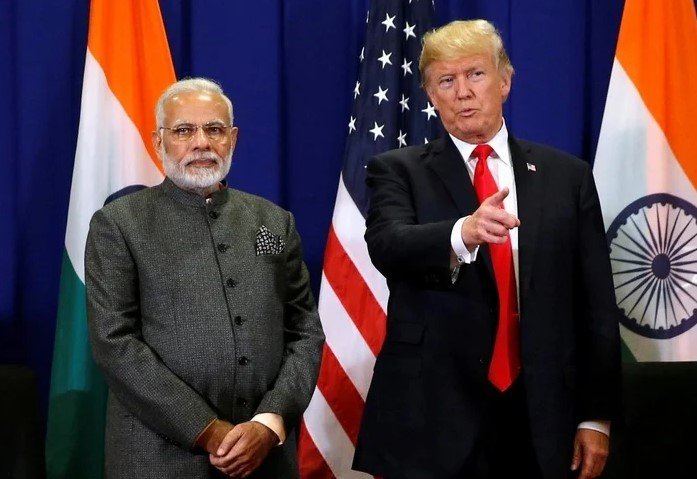United States President Donald Trump, in his first address to Congress since beginning his second term, took a strong stance on trade policies, emphasizing the need for tariffs as a tool of economic protectionism. Among the nations he singled out was India, which he accused of imposing exorbitant duties on American-made automobiles.
Trump’s Tough Talk on Tariffs
Trump defended his tariff policies as a necessary measure to counter what he described as unfair trade practices by other nations. “If you don’t make your product in America under the Trump administration, you will pay a tariff, and in some cases, a rather large one,” he asserted before lawmakers. He underscored the fact that the United States has long faced high duties on its exports, promising a more aggressive stance in enforcing reciprocal tariffs.
India was a key focus of Trump’s argument. “India charges us auto tariffs higher than 100 percent,” he said, portraying it as an example of how the U.S. has been disadvantaged in global trade. His remarks reflect his administration’s continued scrutiny of India’s trade policies, an issue he also raised during his first term.

India’s Auto Tariffs: A Longstanding Issue
The tariffs Trump referred to are not new. India has historically imposed steep import duties on foreign automobiles to protect its domestic manufacturing industry.
- Fully built imported cars attract a 100% customs duty in India, while larger-engine vehicles face duties as high as 125%.
- Even semi-knocked-down vehicles, which require local assembly, are taxed at rates ranging from 30% to 60%.
- In contrast, the U.S. imposes a 2.5% tariff on imported cars and a 25% tariff on trucks.
American automakers, including Ford and Tesla, have previously lobbied against these high duties, arguing that they make American cars unaffordable for Indian consumers. Tesla CEO Elon Musk, in particular, has frequently called for lower tariffs to facilitate the company’s entry into the Indian market.
Trump’s Call for Reciprocity
Trump’s rhetoric on tariffs is part of a broader push for what he terms “reciprocal trade.” His administration has floated the idea of imposing similar or higher tariffs on nations that charge disproportionately high duties on U.S. goods. While this strategy is popular among protectionist advocates, critics warn that it could escalate trade tensions and impact diplomatic relations.
During his first term, Trump had repeatedly pressured India on trade, leading to the revocation of India’s preferential trade status under the Generalized System of Preferences (GSP) program in 2019. The move impacted billions of dollars in duty-free exports from India to the U.S., straining bilateral trade ties.
India-U.S. Trade Relations Under Scrutiny
The U.S. and India share a complex trade relationship, with annual bilateral trade reaching over $190 billion in 2023. However, disputes over tariffs, market access, and digital trade regulations have occasionally strained ties.
- The U.S. has criticized India’s high tariffs on agricultural products, medical devices, and tech imports.
- India, on the other hand, has raised concerns over American visa policies affecting its IT sector and high tariffs on steel and aluminum exports.
- In 2023, trade negotiations saw progress, but several contentious issues remain unresolved.
Trump’s latest remarks suggest that trade tensions could escalate again, with India likely to face renewed pressure to reduce its tariff barriers.
Will India Respond?
While India has yet to formally respond to Trump’s speech, past reactions suggest that New Delhi is unlikely to make immediate concessions. The Indian government has long defended its tariff structure as essential for protecting domestic industries and fostering local manufacturing under its ‘Make in India’ initiative.
Moreover, India’s trade policy is driven by domestic economic considerations and strategic partnerships with multiple global players, including the European Union and China. Any major policy shifts would require careful negotiation and reciprocal benefits from the U.S.
For now, Trump’s statements add a fresh layer of complexity to U.S.-India trade relations, setting the stage for potential talks—or tensions—in the months ahead.
